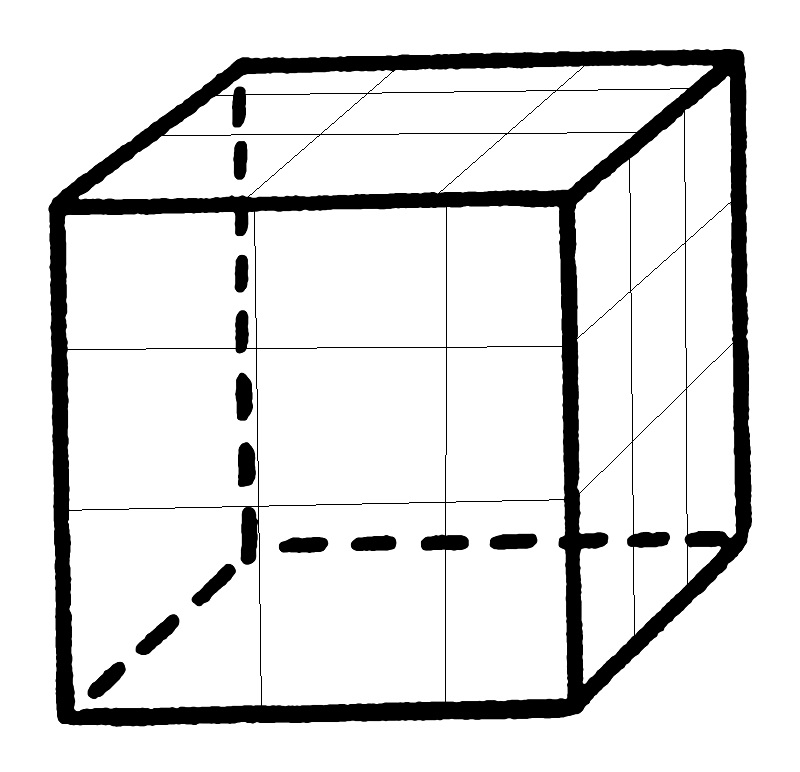What’s this?

It’s the two-dimensional (2D) layout for a game of 3D Tic-Tac-Toe (or “Noughts & Crosses” for those of the British Empire persuasion).

There are two or three ways of winning:
Single-plane:

Cross-plane (diagonal):

Cross-plane (vertical):

Unlike the ordinary 2D game, starting first does not guarantee a win or tie to the experienced player, although placing an X in the center of the cube (the second # in the above) in the first move makes it really difficult — but not impossible — for the defender.
Background: when I were a lad in high school, I first conceptualized the game (I don’t claim to have invented it, of course — someone else must surely have done it before I did — but I did arrive at it independently).
Later on, when I was a 20-year-old mainframe computer operator at a Great Big Insurance Company, I wrote a simple routine (using punch cards!), and would play against the computer during those long boring hours (3pm – 7am) in the night shift.
Geek stuff: I ran it in Partition 5 — P5 was the testing partition — so that it wouldn’t interfere with the main processing. Also, I didn’t know how to make entries alphanumeric so I just used 1 and 0 instead of x and 0.
More geekery: if I recall correctly, it was an IBM 360/256 VM system, and major updates in P2 — P1 was reserved for CICS — took a really long time, up to four hours.
Anyway, I was finally busted by the SysAdmin guy after about a month, when he reviewed the operations log and saw what I’d been doing. While he was intrigued by the program and acknowledged that it wouldn’t interfere with the machine’s operation, he nevertheless banned it — or to be more specific, he banned anyone from running a routine that hadn’t first been vetted by management, which I guess is understandable. But I wasn’t reprimanded, because he was a nice guy.
Good times, good times.

When I was a kid we had a game that consisted of a 4×4 grid of steel pins which you’d drop beads onto, same idea but with four cells instead of 3 (each pin could hold four beads. Even had a handy trough around the base to keep dropped beads off the floor. I recall it being challenging.
Mark D